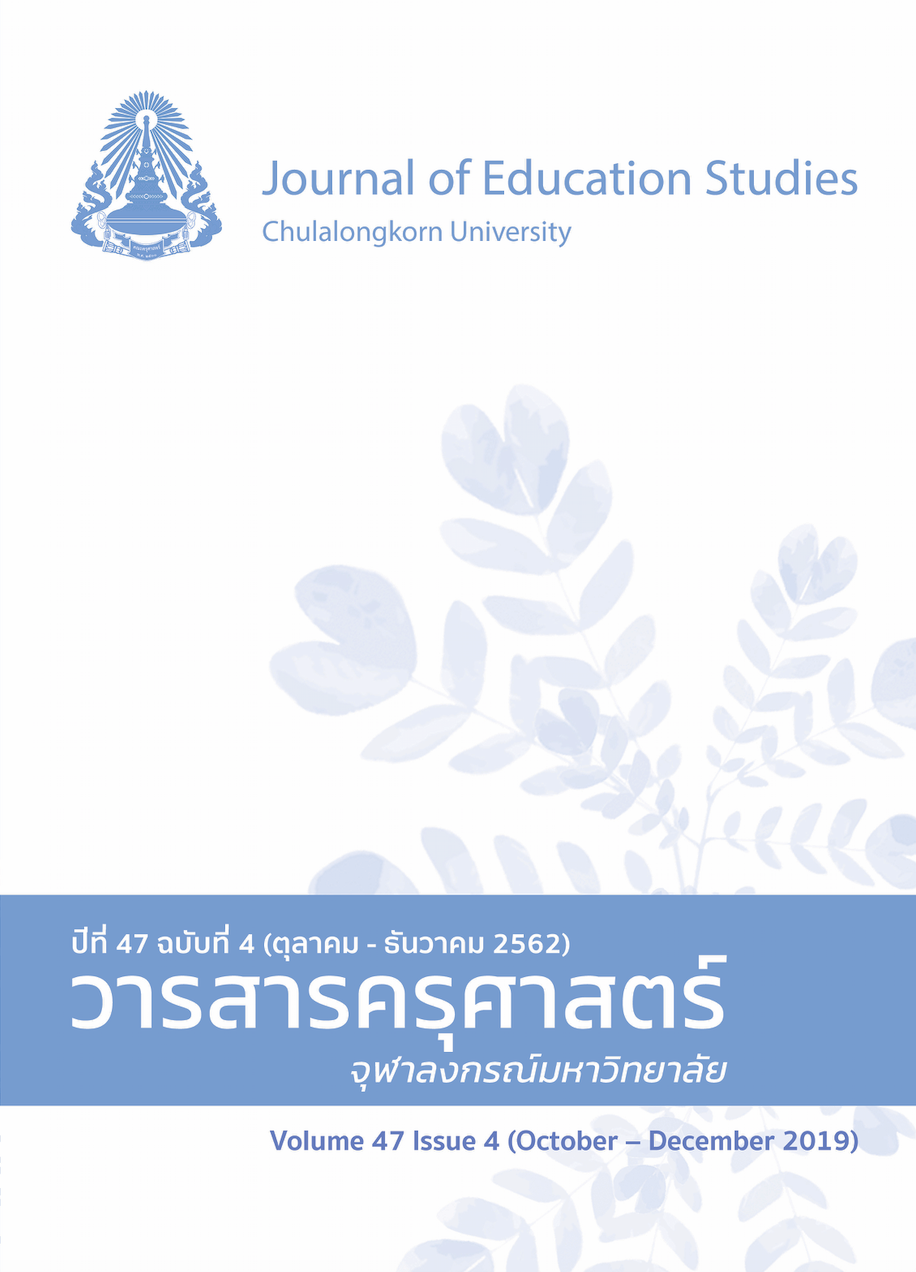A Development of Activity Model for the Enhancement of Nursing Students’ Self-Efficacy in Performing an Educational Intervention to Promote Health of Community-Dwelling Older Adults
Keywords:
ACTIVITY MODEL, SELF-EFFICACY, NURSING STUDENTAbstract
The aim of this research and development was to develop an activity model for the enhancement of nursing students’ self-efficacy in performing an educational intervention to promote health of community-dwelling older. The research process consisted of four steps: the first step was to study baseline data, related concepts and theories, problems and requirements regarding the Nursing Practicum course for health promotion and prevention as well as nursing students’ views on this practicum course. The second step was to develop an activity model, and the third step was to implement the activity model. The fourth step was to evaluate and improve the activity model. The results of the research revealed that the developed model consisted of 6 components, including (1) the principle of the activity model (2) Goal of the activity model (3) Objective of the activity model (4) Contents (5) Implementing of learning activities and (6) Measurement and evaluation. The developed model was examined by experts with the IOC value of 0.88. The effectiveness of the developed model was evaluated, and the results showed that the mean post-test knowledge score was significantly higher than the mean pre-test score. The students’ mean self-efficacy score in performing an educational intervention to promote health of community-dwelling older adults increased significantly from pre-test to the end-of-course test. Eighty percent of sample had high level of skills in providing patient education and health promotion activities. The students 'satisfaction toward the developed model was at the high level. In addition, the elderly’s satisfaction toward the teaching skills of nursing students was at the high level.
References
ทิศนา แขมมณี. (2556). ศาสตร์การสอน: องค์ความรู้เพื่อการจัดกระบวนการเรียนรู้ที่มีประสิทธิภาพ (พิมพ์ครั้งที่ 17). กรุงเทพมหานคร: จุฬาลงกรณ์มหาวิทยาลัย.
นุชนาถ ประกาศ, จิตติยา สมบัติบูรณ์, และ สุกัญญา ขันวิเศษ. (2562). การพัฒนารูปแบบการจัดการเรียนรู้โดยใช้สถานการณ์เสมือนจริงเพื่อส่งเสริมการรับรู้ความสามารถในการใช้กระบวนการพยาบาลของนักศึกษาพยาบาล วิทยาลัยพยาบาลพระปกเกล้า จันทบุรี. วารสารวิทยาลัยพยาบาลพระปกเกล้า จันทบุรี, 30(1), 200-215.
บุญชม ศรีสะอาด. (ม.ป.ป). การแปลผลเมื่อใช้เครื่องมือรวบรวมข้อมูลแบบมาตราส่วนประมาณค่า. สืบค้นจาก www.watpon.com/boonchom/05.doc
เมธิณี เกตวาธิมาตร, นัยนา ภูลม, จีราภรณ์ ชื่นฉ่ำ, และ ชิดชนก พันธ์ป้อม. (2559). การพัฒนารูปแบบการส่งเสริมสมรรถนะในการบริหารความเสี่ยงและความปลอดภัยในการดูแลผู้ป่วยของนักศึกษาพยาบาล วิทยาลัยพยาบาลบรมราชชนนี สระบุรี. วารสารการพยาบาลและการศึกษา, 9(4), 74-89.
ภาษาอังกฤษ
Bandura, A. (1986). Social foundations of thought and action: a social cognitive theory. Englewood Cliffs, New Jersey: Prentice-Hall.
Bandura, A. (1997). Self-efficacy: The exercise of control. New York: W.H. Freeman and Company.
Bandura, A. (2004). Health promotion by social cognitive means. Health Education & Behavior, 31(2), 143-164.
Baxter, P., & Rideout, E. (2006). Second-year baccalaureate nursing students’ decision making in the clinical setting. Journal of Nursing Education, 45(4), 121-127.
Darkwah, V., Ross, C., Williams, B., & Madill, H. (2011). Undergraduate nursing student self-efficacy in patient education in a context-based learning program. Journal of Nursing Education, 50(10), 579-582.
Friedman, A. J., Cosby, R., Boyko, S., Hatton-Bauer, J., & Turnbull, G. (2011). Effective teaching strategies and methods of Delivery for patient education: A systematic review and practice guideline recommendations. Journal of Cancer Education, 26(1), 12-21.
Goldenberg, D., Andrusyszyn, M. A, & Iwasiw, C. (2005). The effect of classroom simulation on nursing students' self-efficacy related to health teaching. Journal of Nursing Education, 44(7), 310-314.
Hyunsun, K., & Suh, E. E. (2018). The effects of an interactive nursing skills mobile application on nursing students’ knowledge, self-efficacy, and skills performance: A randomized controlled trial. Asian Nursing Research, 12, 17-25.
Jones, J. M., Papadakos, J., Bennett, C., Blacker, S., Catton, P., Harth, T., & Walton, T. (2011). Maximizing your patient education skills (MPES): A multi-site evaluation of an innovative patient education skills training course for oncology health care professionals. Patient Education and Counseling, 84(2), 176-184.
Joyce, B., Weil M., & Calhoun, E. (2009). Models of teaching (8th ed.). Boston, MA: Pearson Education.
Kaariainen, M., & Kyngas, H. (2010). The quality of patient education evaluated by the health personnel. Scandinavian Journal of Caring Sciences, 24(3), 548-556.
Lamiani, G., & Furey, A. (2009). Teaching nurses how to teach: An evaluation of a workshop on patient education. Patient Education and Counselling, 75(2), 270-273.
Lipponen, K., Kyngas, H., & Kaariainen, M. (2006). Surgical nurse’s readiness for patient counselling. Journal of Orthopaedic Nursing, 10(4), 221-227.
Oyetunde, M. O., & Akinmeye, A. J. (2015). Factors influencing practice of patient education among nurses at the university college hospital, Ibadan. Open Nursing Journal, 5(05), 500-507.
Pender, N. J. (1996). Health promotion in nursing practice. Connecticut: Appleton & Lange.
World Health Organization [WHO]. (2018). Noncommunicable diseases. Retrieved from https://www.who.int/news-room/fact-sheets/detail/noncommunicable-diseases




